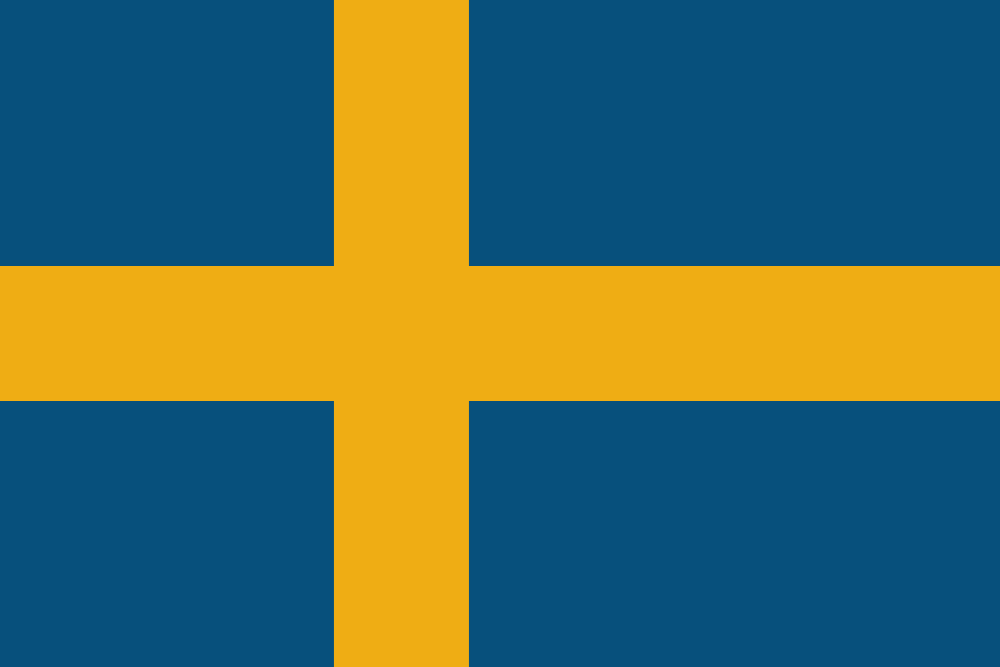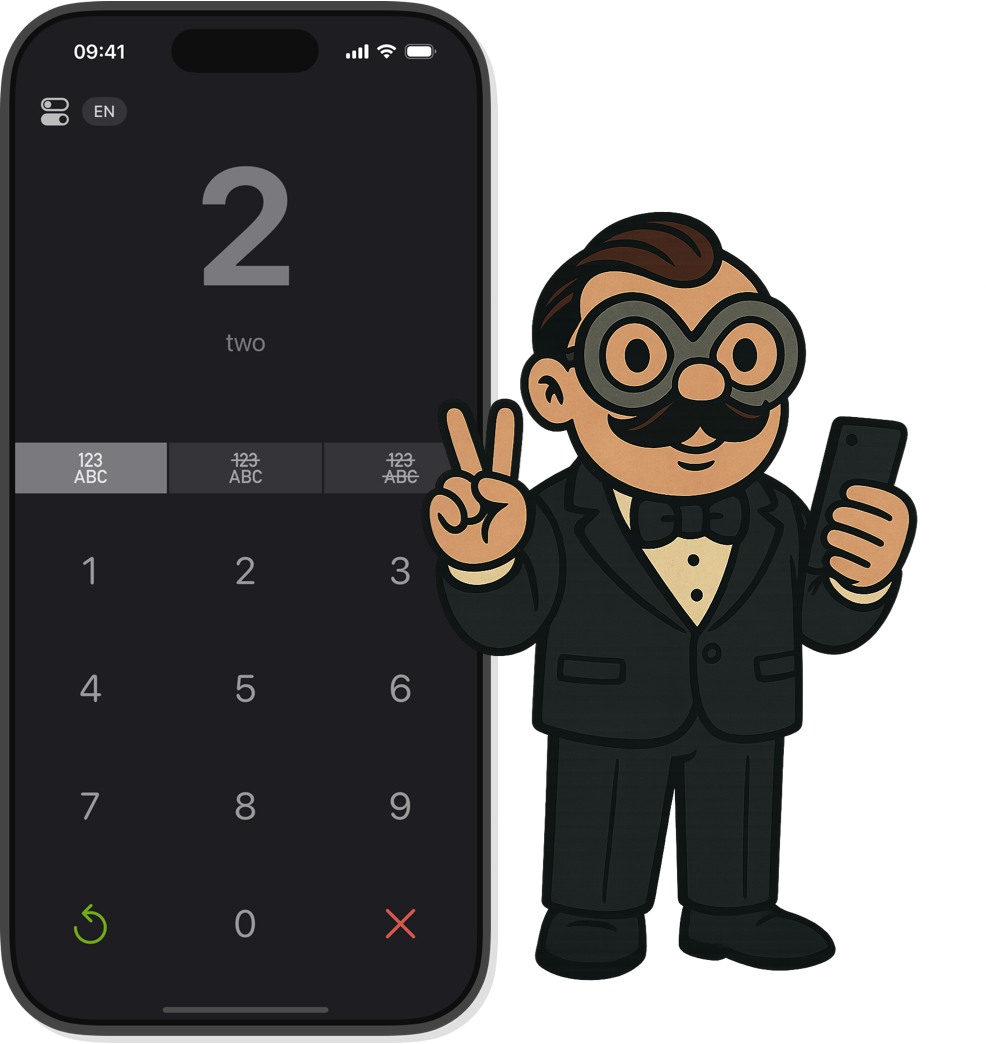Learn Swedish Numbers: From "ett" to "hundra"
The Swedish number system is logical and very similar to English. Let us explain the simple system and learn much more than just numbers from 1 to 100.


How Swedish Numbers Are Structured
The Swedish number system is very logical and regularly structured. Most numbers follow clear rules, with only a few exceptions among the basic numbers from 1-12.
- 1-12
-
Basic numbers: ett, två, tre, fyra, fem, sex, sju, åtta, nio, tio, elva, tolv
These numbers have their own names and must be memorized. The number 1 has two forms: en (for grammatically masculine/feminine nouns) and ett (for neuter nouns and when counting).
- 13-19
-
Formation with "-ton": tretton, fjorton, femton, sexton, sjutton, arton, nitton
These numbers are formed from the basic number (3-9) and the suffix -ton (ten). Similar to English numbers with "-teen".
- 20-99
-
Tens + ones: tjugoett, trettiofem, nittionio
The numbers are formed by joining the tens and ones directly together (without spaces or "and"). Example: 21 is tjugoett (twenty-one).
- 100+
-
Hundred & thousand: hundra / etthundra, tusen / ettusen
Hundred is hundra, thousand is tusen. The "ett" can be added in front: etthundra, ettusen – both forms are correct.
Swedish Numbers from 1 to 100
All Swedish numbers from 1 to 100 in overview. Perfect for systematic learning and quick reference.
Test Your Swedish Number Skills
Can you match these numbers correctly? How confident are you with Swedish numbers from 1-100?
Insider tip: App for targeted number training. Did you know there's an app dedicated exclusively to numbers in foreign languages? With the Numfred App, you can specifically learn Swedish numbers.
Learn Swedish numbers with the Numfred App!
The app designed to help you master listening comprehension for numbers in foreign languages.
- Free basic number ranges
- Learn numbers in 13 languages
- No subscription. No registration.
- Ad-free
Hundreds, Thousands and Large Numbers
Here are the most important numbers and their formation:
- 100
-
(ett) hundra
Standing alone, often just hundra. In combination: etthundraett (101).
- 200-900
-
tvåhundra, trehundra, fyrahundra, femhundra, sexhundra, sjuhundra, åttahundra, niohundra
The hundreds are simply formed by adding the basic number in front, without any special features.
- 1,000
-
(ett) tusen
Thousand
- 1,000,000
-
en miljon
One million
- 1,000,000,000
-
en miljard
One billion
- 1,000,000,000,000
-
en biljon
One trillion
Common Pitfalls When Learning Numbers
Hearing or quickly pronouncing numbers can be challenging. These cases in particular often lead to confusion:
-
Watch gender agreement (en/ett):
en bil (a car) vs. ett hus (a house). The number 1 adapts to the grammatical gender. When counting without a noun, ett is usually used. In compound numbers, it usually remains ett: tjugoett. -
Similar-sounding numbers:
femton (15) vs. femtio (50), or sexton (16) vs. sextio (60). In the teens (13-19), the suffix -ton is stressed, while in the tens (20-90), the suffix -tio is stressed. -
Pronunciation of "sju" and "tjugo":
The 7 (sju) and 20 (tjugo) have an "sj" sound that can be difficult for English speakers. It sounds somewhat like the "sh" in "ship" but with rounded lips and more friction. -
No "and" between numbers:
Unlike in some languages, you don't say "twenty and one" but simply tjugoett (twenty-one). All compound numbers are joined directly together, without "and" in between.
Understanding and Using Numbers in Daily Life
In spoken Swedish, numbers are often pronounced quickly – especially with:
-
Time expressions:
Klockan är fem = It's five o'clock (5:00)
kvart över sju = quarter past seven (7:15)
halv tio = half past nine (9:30)
tio i tolv = ten to twelve (11:50) -
Money amounts:
femtioåtta kronor = 58 kronor
etthundrasjuttiofem kronor och femtio öre = 175.50 kronor
spänn = money (colloquial)
Det kostar femtio spänn = It costs fifty bucks. -
Years:
1985 → nittonhundraåttiofem
2025 → tvåtusentjugofem -
Basic arithmetic:
8 + 6 = 14 → åtta plus sex är fjorton
15 - 7 = 8 → femton minus sju är åtta
6 × 4 = 24 → sex gånger fyra är tjugofyra
20 ÷ 5 = 4 → tjugo delat med fem är fyra -
Fractions and decimals:
½ → en halv
¼ → en fjärdedel
5.82 → fem komma åttiotvå
Unique Characteristics of Swedish Numbers
Swedish has certain linguistic conventions and distinctive features when dealing with numbers – in spelling, pronunciation, and expression. Here's an overview of typical characteristics:
-
Compound numbers:
Numbers under 100 are written as one word: tjugoett (21), nittionio (99). -
Number formatting with periods and commas:
In Swedish, thousands are often separated with a period or space, decimal places always with a comma:
1.500,50 or 1 500,50 = one thousand five hundred comma fifty
Explore more languages:


